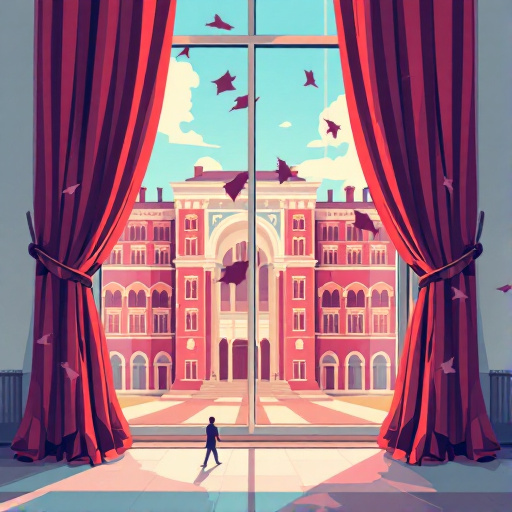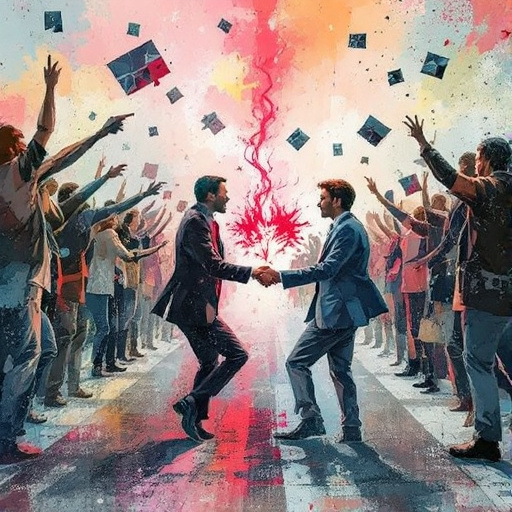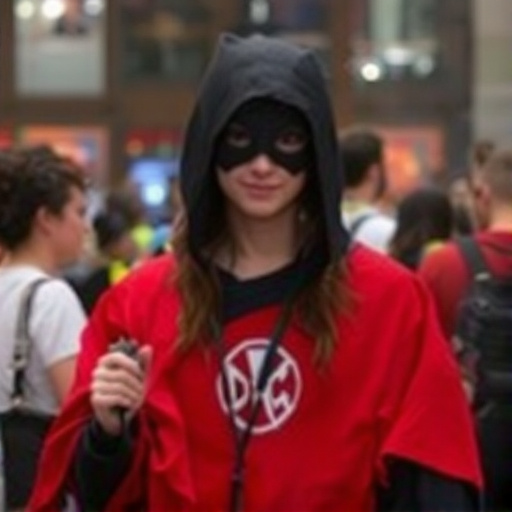Featured Articles
- Alumni as Unseen Influencers: How Grad Networks Shape Social Movements and Cultural Trends Today
- "Behind the Curtain: How College Alumni Networks are Fueling the Rise of Gig Economy Side Hustles"
- "From Campus to Cosmos: How College Alumni are Shaping Space Exploration and Tech Innovation"
- From Cap and Gown to Crypto: How College Alumni Are Shaping the Future of Digital Currency
- "From Classmates to Competitors: The Surprising Rivalries Among College Alumni and Their Impact on Careers"
"From Classroom to Comic Con: The Surprising Rise of Alumni Cosplay Communities"
"From Classroom to Comic Con: The Surprising Rise of Alumni Cosplay Communities"
The phenomenon of alumni cosplay communities has surged remarkably, transforming individuals who once roamed school hallways into passionate creators at conventions like Comic Con. This article explores the roots of this trend, the creative expressions it offers, and fascinating insights into the cultural landscape of modern fandom.
The Unexpected Spark: How It All Began
It all started a few years back when a group of friends from a high school drama club attended their first Comic Con. “We dressed up as our favorite characters from the series we’d put on every fall—the same camaraderie we felt on stage spilled into our cosplay,” recalls Jake Thompson (22), an animator and budding cosplayer who now has nearly 50,000 followers on Instagram.
The Journey from Classroom to Convention
Why are alumni so drawn to cosplay? The reasons range from nostalgia to the desire for community and artistic expression. Dr. Alicia Rivers, a sociologist who studies fandom cultures, notes, “Cosplay allows people to reconnect with their past, particularly through iconic characters that shaped their youth. When they get together, they’re reliving those formative experiences.” In a survey she conducted, 72% of respondents claimed that cosplay felt like an extension of the creativity they explored in school.
The Numbers Game: Who Are These Cosplayers?
Recent statistics indicate that around 60% of Comic Con attendees have some form of cosplay experience. This is particularly pronounced among those aged 18-30, a demographic that often celebrates the aesthetic and storytelling elements of various media. In total, the cosplay market is projected to grow by 14.9% from 2023 to 2028, potentially reaching a valuation of over $450 million (Statista, 2023). This is clearly a trend that’s capturing attention!
Crafting Identity: Cosplay as Self-Expression
For many, cosplay transcends mere imitation. It provides a safe space to explore identity, gender, and creativity. “As a queer person, I found voices of affirmation and representation in character design and storytelling,” says Priya Lee (24), who often cosplays as characters that embrace fluidity. “Dressing up as someone I identify with has felt empowering and affirming, especially in settings that can often feel stifling.”
Community Beyond the Classroom
Alumni cosplay groups often act as social hubs for graduates to share tips, discuss their crafts, and collaborate on complex projects. Comic Cons around the world are now teeming with larger groups sporting matching attire, offering a side of friendship that mirrors the group projects of high school. These gatherings foster a sense of belonging as participants exchange stories, sewing secrets, and even emotional struggles.
Examples of Successful Alumni Cosplay Communities
One vibrant example is the “Alumni Avengers,” a group formed by graduates from the same university's animation program. Comprising videographers, illustrators, and performers, they shine at conventions—often turning heads with their interconnected themes and original designs. Their most recent project? A fully animated short featuring their own characters battling against iconic antagonists, blending the arts they once collaborated on in college.
Challenges of Cosplay: The Reality Behind the Craft
While the bright lights of Comic Con can be enticing, the journey to becoming an adept cosplayer is not without its hurdles. Costumes often require significant time and money to craft, and issues of accessibility can deter newcomers. “It’s definitely a financial commitment,” shares Sam Rodriguez (30), whose handcrafted armor for a character from “Final Fantasy” cost him nearly $600. “But the connections you make and the experiences you have make every cent worth it.”
Navigating Criticism and Fitting In
Another prominent challenge is the underlying pressure and critique within cosplay communities. Online platforms can sometimes harbour toxic remarks, and this extends to alumni groups too. “We all have our own journeys, but sometimes it feels like I need to meet a certain standard,” admits Elena Choi (28), who frequently attends conventions with her old college friends. “But our community empowers each other to dream bigger and celebrate individuality.”
Harnessing the Power of Community
To counteract negativity, many alumni communities foster environments focused on support and creativity. They organize “Cosplay Build Days” where members can come together to create costume elements, share resources, and learn new techniques. These gatherings not only deepen bonds but empower participants to elevate their crafts without fear of judgment.
The Monetary Angle: Is Cosplay Just a Hobby?
Although many cosplayers approach the art as a hobby, a significant number derive income from various avenues. In fact, a survey conducted by the Cosplay Community Foundation found that about 40% of cosplayers earn income through online sales of costumes, accessories, and prints, a trend significant enough that all the respondents had either considered or already begun their own cosplay-related business.
“I started my Etsy shop to sell pattern designs and templates, and it's been a game-changer,” says Lily Harper (27), an engineer by day and a cosplayer by night. “It’s amazing how hobbies can turn into entrepreneurial ventures while also allowing me to express my love for the craft!”
The Evolution of Content Creation
Moreover, with the rise of platforms such as TikTok and Instagram, cosplay has evolved from being a niche community into an expansive realm for creators. Some alumni communities now produce collaborative content through TikTok challenges, garnering thousands of views. Data from 2022 indicates that the #CosplayCommunity hashtag had around 10 billion views, illustrating how this community is captivating audiences far beyond its initial confines.
From Inspiration to Innovation: The Future of Cosplay
As cosplay continues to grow in popularity, its intersection with technology also presents exciting developments. 3D printing has become a vital tool, allowing detailed costume elements to be created more efficiently than traditional crafting methods. The rise of AR (augmented reality) further enables cosplayers to integrate digital effects into their presence at conventions, sparking a new wave of exploration and creativity.
Legacy and Impact
For alumni communities, these developments not only reshape the costume-making narrative but also pave the way for a more inclusive space, encouraging participants to explore uncharted territories. "It's about legacy—finding new ways to express what we love through characters who mirror our ideals and struggles," concludes Dr. Rivers.
In essence, alumni cosplay communities not only celebrate creativity but build a novel landscape where past experiences coalesce with aspirations for the future. Whether it’s through fabric and stitching, technology, or fierce fandom discussions, these communities bridge the gap from classroom to Comic Con—empowering individuals and igniting passions across generations.
The Call to Action
So, if you’re sitting on the fence about trying your hand at cosplay or reconnecting with classmates, remember this: There's a universe waiting to celebrate your quirks, insignias, and creativity. Tap into that nostalgia! As Jake once said, “The only thing standing between you and your favorite character is a needle and a thread.”
Make the leap, join your alumni community, or even create one! And who knows? Your next epic adventure might just be right around the corner at a Comic Con near you.




